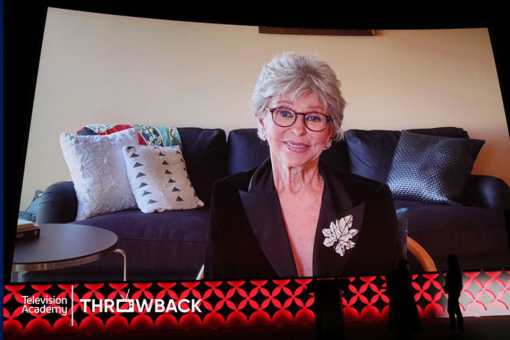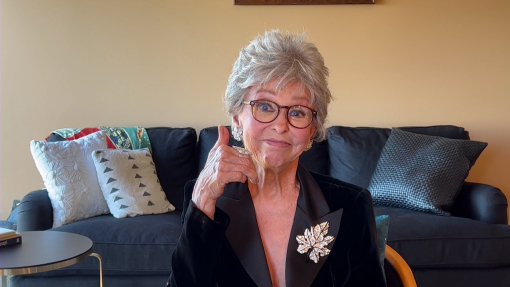Television, the so-called cool medium, turned itself
into a warm,
human, addictive
embrace whenever Jackie Gleason caressed the airwaves.
Throughout TV’s golden era and beyond, Gleason dipped into the treasures of his alter ego to give the new medium bits and pieces of himself: the boastful and bombastic Ralph Kramden, the sad-faced Poor Soul, the philosophical Joe the Bartender, and the philandering Park Avenue playboy, Reggie Van Gleason III.
One of television's greatest sketch comics, Gleason was also one of the medium’s most noteworthy dramatic actors — this during the same golden age when live anthology shows such as Philco Playhouse and Studio One flourished.
Today he is known primarily as a film actor, but three decades ago, when television was still an infant, Jackie Gleason became one of the medium’s first stars.
The Great One, as he was called because of his girth and his talent, was born February 26, 1916, in Brooklyn, New York. The birth certificate read Herbert John Gleason, but the chubby Irish boy with coal-black hair and blue eyes was called Jackie by everyone who knew him.
He grew up in the tenements of Brooklyn’s Bushwick section, where the lack of money was always the number-one problem for his family. Tragedy also dogged the household. A sickly teenage brother died when Jackie was three. When Jackie was nine, his alcoholic father disappeared, “never to show up again,” Gleason has often recalled. His mother, destitute, took a job as a token clerk on the BMT subway line between Brooklyn and Manhattan and supported herself and her son as best she could. As an adult, Gleason would one day reduce the essence of those years to a single character: the Poor Soul.
When Jackie was 16, he quit Bushwick High, hung around the local poolroom, emceed auto thrill shows, and entered amateur talent contests at the Bushwick Theater.
One day, Bushwick’s master of ceremonies quit and Jackie was asked to take on the job. Earning four dollars a night, twice a week, he sang, danced, and kidded with the other acts. At the same time, he began to develop his own comedy routines, and, already aware of his ability to make people laugh, began to believe that he might indeed become a comic.
It was about the only thing he did believe in when he faced yet another family tragedy: the death of his mother in 1936, after a long illness.
The death forced him out of the confines of Brooklyn and into Manhattan, where, at 18, he began pounding the proverbial pavements. He soon landed his first job as a professional comic. A booker sent him to a small club called Tiny’s Chateau in Reading, Pennsylvania. He bombed during the first set, was fired on the spot, bowled ’em over during the second set, was rehired on the same spot, and then held over an extra week.
After that, Gleason worked in clubs throughout New Jersey, honed his craft doing burlesque comedy, and gradually began to get bookings at the larger clubs.
He was working at the fashionable Club 18 in Manhattan one night in early 1941 when movie mogul Jack L. Warner walked in and heard Gleason go through his specialty at the time, insult humor. Warner apparently liked what he heard, even when the insults were aimed at his receding hairline. “Is that your head, sir?” Gleason asked Warner in front of the audience. "Or are you diapering a baby?"
That night Gleason signed a one-year, $250-a-week contract with Warner Bros.
In Hollywood, he made six movies, most of them less than memorable: Navy Blues, All Through the Night (with Humphrey Bogart); Tramp, Tramp, Tramp; Larceny Inc.; Springtime in the Rockies (with Betty Grable); and Orchestra Wives (with Glenn Miller).
After his year in Southern California, Gleason returned to New York and to nightclub work, enjoyed his first major success on Broadway in the musical comedy Follow the Girls (1945-46) and, in 1948, made his television debut in Toast of the Town, Ed Sullivan’s CBS Sunday night variety show.
Gleason’s sketch of a frustrated pinball player on that show caught the attention of writer-producer Irving Brecher, who soon hired the comic to portray the lovable nincompoop husband, Chester Riley, on NBC's The Life of Riley.
But Gleason's first television series was hardly a smashing success. It lasted only a season — from October 1949 to March 1950. (The series was revived more successfully in 1953 under actor William Bendix, who had portrayed Riley in the original radio series during the 1940s.)
Still, Riley led Gleason to another television series, the weekly variety show Cavalcade of Stars, which was DuMont network's answer to CBS’s Toast of the Town and NBC’s Texaco Star Theater, starring Milton Berle. The format and the medium seemed tailor-made for Gleason’s prodigious talents. Replacing comic Jerry Lester as Cavalcade's emcee in 1950, Gleason began to build a large and loyal following, especially after the young comic began introducing the array of characterizations that have remained with him throughout his television career.
Besides the Poor Soul, Reggie Van Gleason III, Joe the Bartender, and loudmouthed Charlie Bratton, Gleason introduced his most famous character, bus driver Ralph Kramden, in a sketch called “The Honeymooners,” which featured Pert Kelton as wife Alice, Art Carney as best friend Ed Norton, and Joyce Randolph as Norton's ex-stripper wife Trixie.
The Cavalcade show transformed Gleason into a national phenomenon.
When CBS lured the comic away from DuMont in 1952 with a two-year, $11 million contract — the highest in television at that time — Gleason took his various characterizations and "The Honeymooners" with him.
His new comedy variety program, The Jackie Gleason Show, aired live on September 20, 1952, ran for three seasons, and, with only brief periods off the air, continued for the next 15 years, until September 12, 1970. It was one of the longest-running shows in television history.
The show featured the June Taylor Dancers, Ray Bloch's orchestra, and, in later editions, the Glea-Girls, 16 young models who did little except look beautiful as they introduced various sketches.
Gleason opened each show with a self-contained monologue peppered with the expressions he made famous: "How sweet it is," or "A little traveling music, please." The monologue invariably ended with "And awaaay we go," which led into the first sketch.
The second half of the program, "The Honeymooners," proved to be the show’s most popular segment. Pert Kelton, ill with heart disease, was replaced by Audrey Meadows, whose practicality as Alice contrasted sharply with Ralph’s endless get-rich schemes and blustery wrongheadedness. Gleason made Ralph into one of the great losers among TV characters, even as he gave him enormous emotional impact.
"It is Jackie's ability to engender sympathy [in his role as Ralph] that is one of his most powerful assets," Steve Allen once wrote. "At the finish of each Honeymooners’ sketch … an interesting thing occurs. Jackie ceases to be Ralph Kramden and becomes instead the Poor Soul. He drops the mask of anger and is no longer an aggressive adult. He is suddenly revealed as a defenseless, baby-faced incompetent."
Gleason's spectacular success as a comedy actor allowed him to take on serious roles, such as The Laugh Maker, his dramatic debut in 1953 for Studio One. Television also gave him the opportunity to indulge his taste for conducting, arranging, and composing music. In the early 1950s, he wrote the music for a television ballet called Tawny, a four-part tone poem. During the same period, his albums of romantic music dominated the charts for months.
After CBS canceled his long-running show in 1971, Gleason turned his attention to an occasional Honeymooners special and to movies. In the late 1970s and early 1980s, he made the three Smokey and the Bandit movies, two of them with Burt Reynolds; The Toy, with Richard Pryor; and The Sting II, with Mac Davis.
"I have had a wonderful life,” Jackie Gleason says of his 69 years. “Considering the way it started out, I’m lucky to be alive.”
This tribute originally appeared in the Television Academy Hall of Fame program celebrating Jackie Gleason's induction in 1986.










